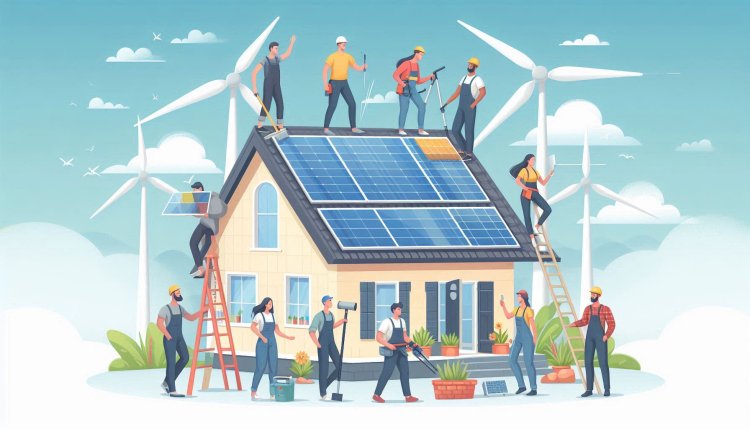Solar Energy in Building Design
Discover how solar energy is integrated into building design to create sustainable and efficient spaces. Explore the benefits and possibilities.

Solar Energy in Building Design
Solar energy is becoming an increasingly popular and efficient source of renewable energy for building design. By harnessing the power of the sun, buildings can reduce their reliance on traditional energy sources and decrease their carbon footprint. Incorporating solar energy into building design not only benefits the environment but also offers long-term cost savings for building owners. Let's explore how solar energy can be integrated into building design to maximize its benefits.
1. Solar Panels
Solar panels, also known as photovoltaic (PV) panels, are the most common way to capture solar energy in building design. These panels are typically installed on the roof of a building to capture sunlight and convert it into electricity. The electricity generated by solar panels can be used to power the building's electrical systems, reducing the need for energy from the grid.
2. Passive Solar Design
Passive solar design involves using building elements such as windows, walls, and floors to capture and store solar energy for heating and cooling purposes. By strategically placing windows and using materials with high thermal mass, buildings can passively collect and retain solar heat during the winter and reject it during the summer. This design approach can help reduce the need for mechanical heating and cooling systems, leading to energy savings.
3. Solar Water Heating Systems
Solar water heating systems use solar collectors to heat water for domestic use or space heating. These systems can be integrated into building design to provide hot water for showers, sinks, and heating systems. By using solar energy to heat water, buildings can reduce their reliance on gas or electricity for water heating, resulting in energy savings and lower utility bills.
4. Building-integrated Photovoltaics
Building-integrated photovoltaics (BIPV) are solar panels that are integrated directly into the building envelope, such as windows, walls, or roofs. These innovative systems allow buildings to generate electricity while maintaining their aesthetic appeal. BIPV systems can be customized to suit the design and energy needs of a building, making them a versatile and efficient option for solar energy integration.
5. Solar Shading Systems
Solar shading systems, such as solar louvers or shades, can be used to control the amount of sunlight entering a building. By strategically placing shading devices on windows or facades, buildings can reduce solar heat gain and glare, improving indoor comfort and energy efficiency. These systems not only help reduce the need for mechanical cooling but also enhance the visual appeal of the building.
6. Solar Reflective Materials
Solar reflective materials, such as cool roofs or reflective coatings, can help buildings reduce heat absorption and lower cooling loads. By reflecting a portion of the sunlight that hits the building's surface, these materials can keep the building cooler and reduce the energy required for air conditioning. Incorporating solar reflective materials into building design can help improve energy efficiency and indoor comfort.
7. Solar Energy Storage
Solar energy storage systems, such as batteries or thermal storage tanks, can be used to store excess solar energy for later use. By storing energy generated during sunny periods, buildings can ensure a reliable and uninterrupted power supply, even during cloudy days or at night. Solar energy storage systems can help maximize the benefits of solar energy and increase energy independence for buildings.
Conclusion
Integrating solar energy into building design offers numerous benefits, including energy savings, reduced carbon emissions, and increased energy independence. By incorporating solar panels, passive solar design, solar water heating systems, BIPV, solar shading systems, solar reflective materials, and solar energy storage, buildings can harness the power of the sun to enhance their energy efficiency and sustainability. As the demand for renewable energy continues to grow, solar energy will play a crucial role in shaping the future of building design.
What's Your Reaction?

















